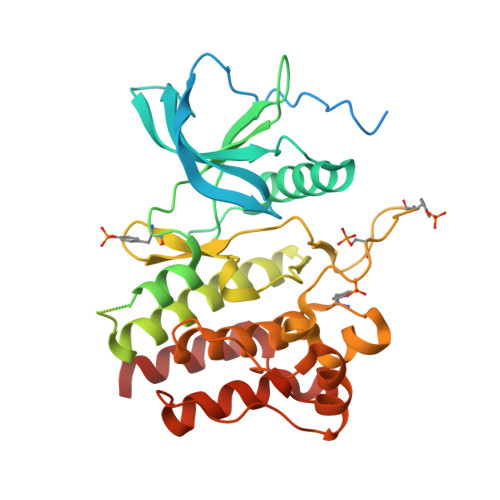RET Functions as a Dual-Specificity Kinase that Requires Allosteric Inputs from Juxtamembrane Elements.
Plaza-Menacho, I., Barnouin, K., Barry, R., Borg, A., Orme, M., Chauhan, R., Mouilleron, S., Martinez-Torres, R.J., Meier, P., McDonald, N.Q.(2016) Cell Rep 17: 3319-3332
- PubMed: 28009299
- DOI: https://doi.org/10.1016/j.celrep.2016.11.061
- Primary Citation of Related Structures:
5FM2, 5FM3 - PubMed Abstract:
Receptor tyrosine kinases exhibit a variety of activation mechanisms despite highly homologous catalytic domains. Such diversity arises through coupling of extracellular ligand-binding portions with highly variable intracellular sequences flanking the tyrosine kinase domain and specific patterns of autophosphorylation sites. Here, we show that the juxtamembrane (JM) segment enhances RET catalytic domain activity through Y687. This phospho-site is also required by the JM region to rescue an otherwise catalytically deficient RET activation-loop mutant lacking tyrosines. Structure-function analyses identified interactions between the JM hinge, αC helix, and an unconventional activation-loop serine phosphorylation site that engages the HRD motif and promotes phospho-tyrosine conformational accessibility and regulatory spine assembly. We demonstrate that this phospho-S909 arises from an intrinsic RET dual-specificity kinase activity and show that an equivalent serine is required for RET signaling in Drosophila. Our findings reveal dual-specificity and allosteric components for the mechanism of RET activation and signaling with direct implications for drug discovery.
Organizational Affiliation:
Structural Biology Laboratory, The Francis Crick Institute, 1 Midland Road, London NW1 1AT, UK. Electronic address: [email protected].

















